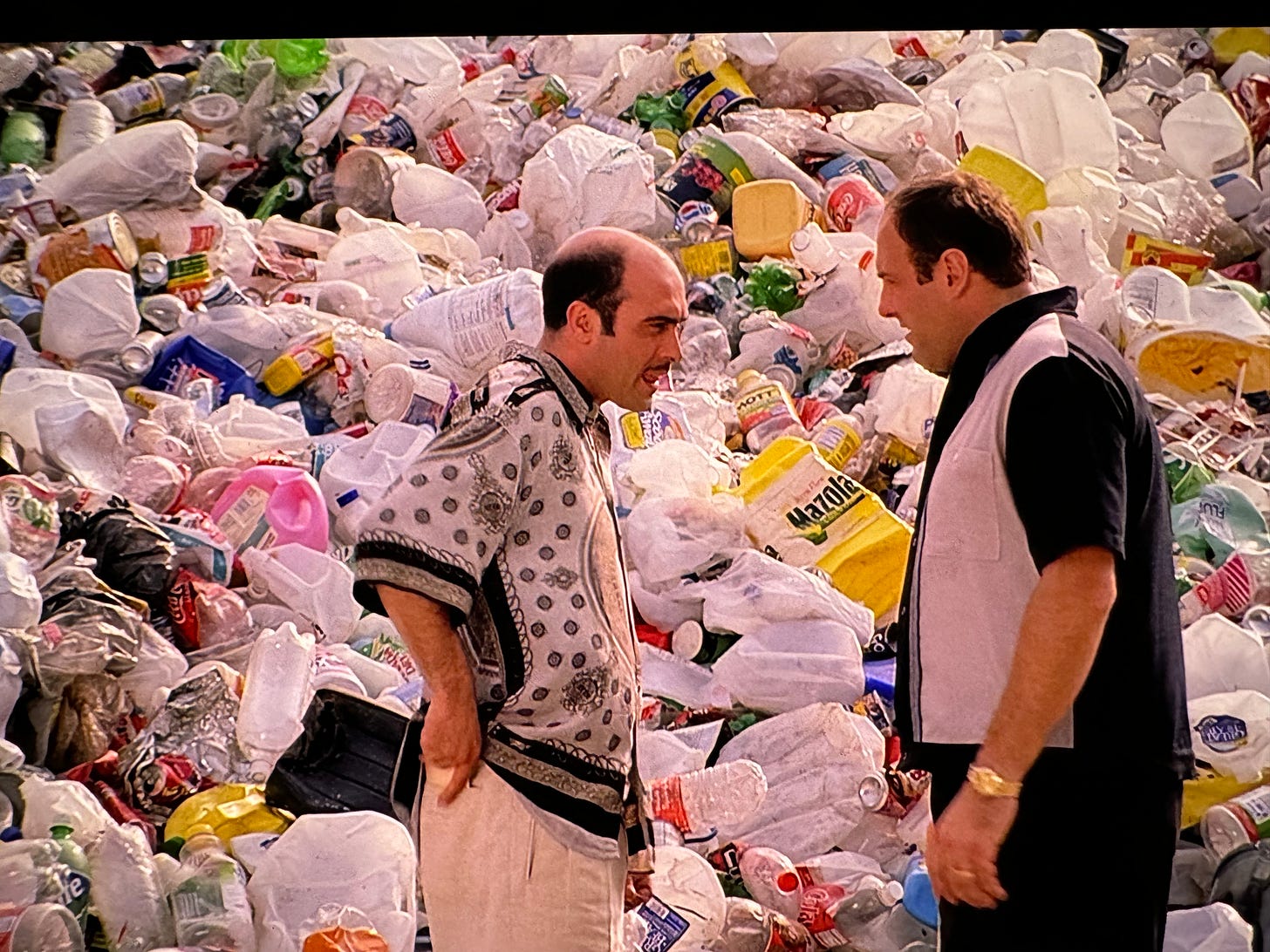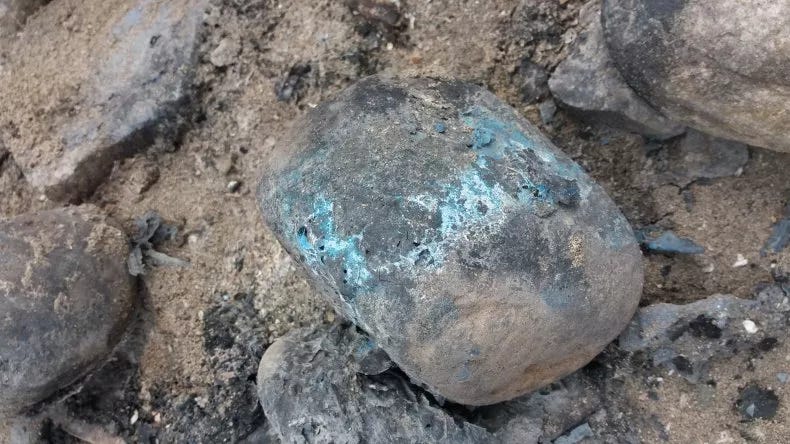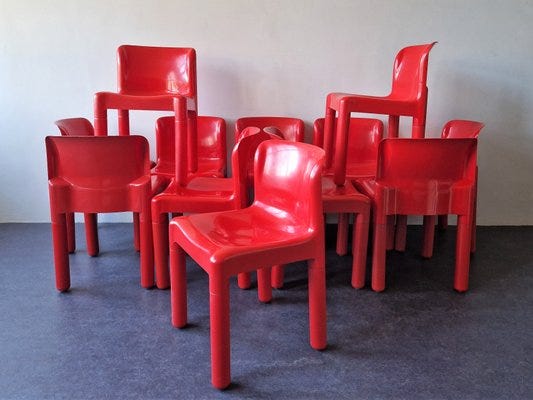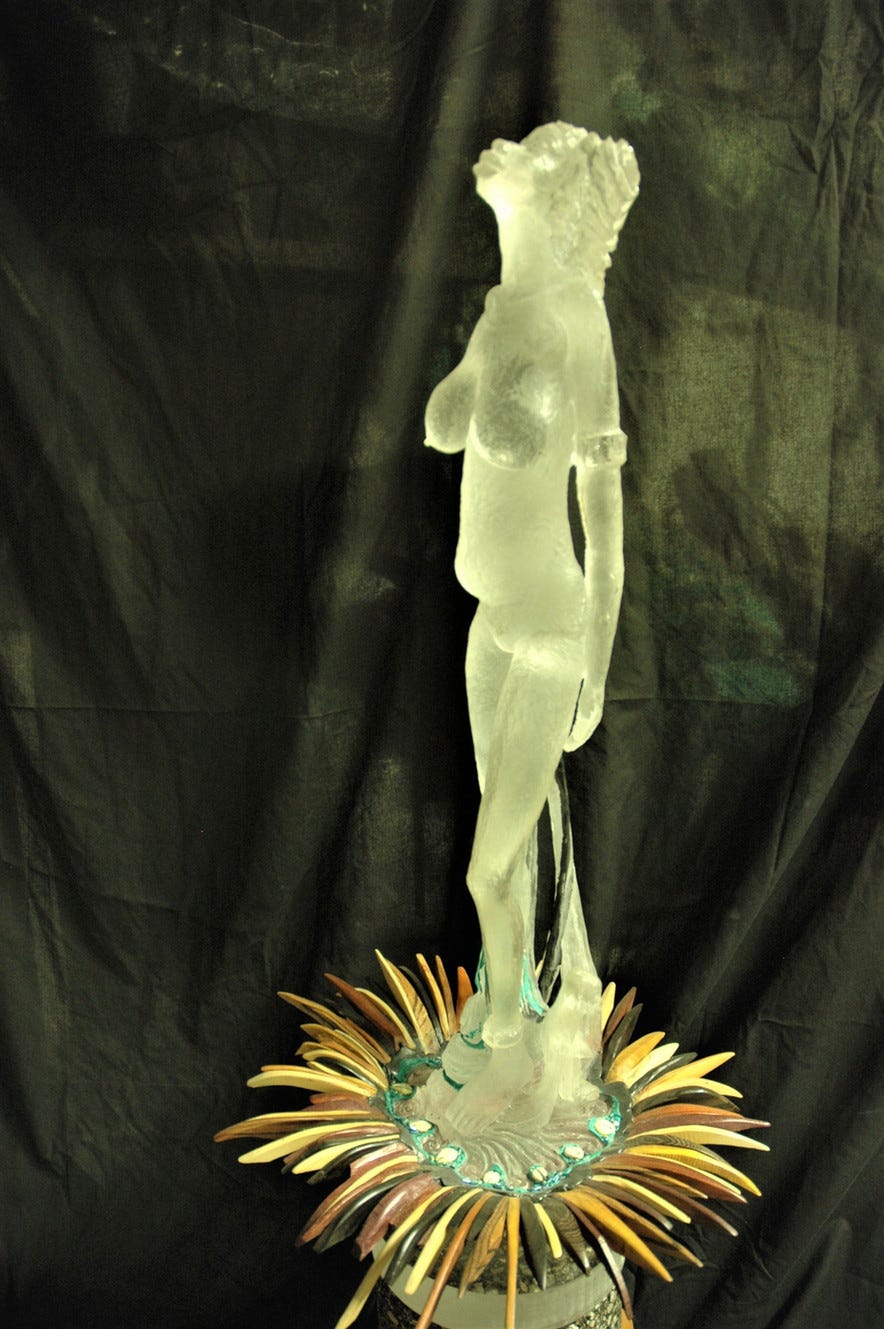This year I’ve been thinking a lot about plastic, and have been wanting to get my thoughts down – but like plastic, the ideas I have around it keep piling up, clogging, spilling into other things, fading below consciousness but not degrading, sitting, waiting.
The story of the discourse on plastic is usually one of a steep climb of wonder, amazement, and innovation followed by a cliff of horror, disgust, and exasperation.
At Dezeen, where I edit during the day, we’ve tracked dozens of ways people have tried to invent our way out of the problem – biodegradable plastics made from all kinds of different natural substitutes made from things like algae, apples, and cacao beans or novel modes of recycling.
But the progress is slow and the mass of plastic production remains. And a minor industry has sprung up around talking about the problem. This year’s Earth Day highlighted plastics while more and more people have begun to call for its abolition altogether beyond the empty gestures of paper straws. And the myth of our youth, large-scale recycling has seemingly dissolved, though people still out of habit sort their material. If meaningful recycling ever happened, it’s certainly not anymore, especially after China stopped importing plastic waste with contamination above 0.05% (down from 10%) under its bizarrely named Operation National Sword in 2018.
In 2022, 175 nations agreed to move towards a United Nations resolution to address the problem of plastic pollution, which is set to be ratified by the end of this year. Of course, the countries that host the largest global producers were absent from this call, and the poorer nations with little infrastructure in general, let alone for advanced recycling or material immigration, due to centuries of exploitation and structural adjustments catch the blame.
As it stands, it’s difficult to imagine a world without plastic. Microplastics have integrated into human, animal, and plant biology, new minerals are being discovered with plastic components on a molecular level, and whole islands have formed in the ocean – all speaking of plastic’s ubiquity at almost every level of our reality.
Plastic material/aesthetic plastic
Beyond material, plastic has come to define our culture and even our metaphysics. Many view the 20th century as existing under the sign of split atom, of the nuclear. And though contemporary plastics pre-date fission, we could say that the 21st century exists under the sign of the plastic polymer – it feels almost too on the nose to point out the coincidence of Barbie and Oppenheimer being a cultural phenomenon last year.
We constantly consume trash TV, an aesthetic that surely extends to Internet video – no shade here, by the way. But this label captures the throwaway, mutable, and mass-produced nature that much of our media shares with plastic – the ubiquitous black trash bag being the operative link (I plan on talking a bit about the differing affects of trash, junk and waste in a future post).
Brazilian theorist Vilém Flusser related the proliferation of “technical objects” – photographic and telegraphic images, which could today be extended to the digital image – to “trash” and said that the second nature of artificiality and equates ecological pollution with global “Americanization”. Plastic is like tracer fire for the American mode of production.
We too have cognitive and philosophical theories of plasticity. It has even extended into the literary world. In his book The Plastic Turn, Indian scholar Ranjan Ghosh speaks about the “plastic-induced” reality that has come to characterize artistic and literary production. For Ghosh, plastic’s material construction and ubiquity can be found in the production of art, down to the syntax of poetry, while its phenomenological effects on us are one both of connection, in repeatable culture and objects spread around the globe, and one of deep disconnection in its artificiality. For Gosh, plastic even signals a memento mori for the human species—many of the too-human objects that surround us will be around long after we are gone. I wrote a little bit about how plastic in trans-human art links us with Earth without human life in a previous post.
Ghosh writes (in an extremely frustrating academic jargon): “Plastic technology or plastic as technology is the unavoidable connection that ensures the cosmos of our every day in society, economy, and culture and sunders us from the cosmos we chose for plastic to inhabit.”
Ghosh recognizes the toxic effect of plastic but also sees an irreversibility in plastic culture. Its material ubiquity is mimicked on cultural levels, in our flexibility, our intense production, and in a certain brightness that quickly loses its luster. He sees the irreversibility of plastic’s entrance into human life as something to work with, to take the lessons of plasticity and the reasons and consequences for its proliferation as something to work with and overcome, not reverse.
Of course, some may say that the “reasons” are capital and quick profits, which is probably true – but can we say without reservation that a utopian society wouldn’t also fall into the trap of disposable plastics? After all, we saw, during Covid, that in times of large-scale health administration, the desire for efficiency and sanitation can outweigh future thinking in organizing on a massive scale.
And if we believe that plastic is a product of our culture and produces ways of thinking, infecting things on a metaphysical level, couldn't certain metaphysics work the other way, from thought to production?
Plastic is a sign of a certain advancement and connection as well as a metaphysical shaper of culture. It reminds us of the end of human time and becomes a potential artifact before the end. It shows us its potential while also highlighting the sickness and harm in thoughtless production and proliferation. It is in many ways a material manifestation of qualities both human and our ideas of the extra-human, or divine.
Ubiquity made visible
Already in the early 1950s, French semiotic theorist Roland Barthes had outlined the mythical qualities of plastic.
“So, more than a substance, plastic is the very idea of its infinite transformation; as its everyday name indicates, it is ubiquity made visible. And it's this, in fact, which makes it a miraculous substance: a miracle is always a sudden transformation of nature. Plastic remains impregnated throughout with this wonder: it is less a thing than the trace of a movement.”
Barthes went on to relate it to alchemy, but ultimately decided that it is a “disgraced material” and said it was the “first magical substance which consents to be prosaic” correctly predicting that it would come to replace in its flexibility many other items, that the whole world could, conceivably, be plasticized.
Barthes didn’t know how right he was in relating plastic to a kind of alchemy. Some 19th-century scientists experimented with mixing blood and milk and cork together to create polymers capable of flexibility and durability that was later found in phenol from tar and later petroleum. In some ways, the results of plastic from its constituent parts can seem unbelievable, even magical.
Capable of almost infinite forms, stunningly durable, indestructible, shiny, and sometimes almost formless – plastic does have many attributes of the magical or even the divine. Especially a pagan divinity. It’s infinitely shapeable, can be close to indestructible, it’s alluring, toxic, and ubiquitous. It gives us power and potential while making us sick and cursed.
Writer Carolyn L Kane relates these qualities with modernism itself.
“The pivotal role of plastic in the construction of Hollywood glamour in the 1920s and ’30s thus comes as no surprise. Used in film stock and on film sets, plastic products provided a repertoire of new materials and metaphors in mirrors, shiny surfaces, lighting effects, smoke screens, and synthetic auras available to all who dared to look.”
Kane goes on to correctly note plastic’s fall from grace, its move from utopian possibility to a vehicle for toxins and cheap products – not to mention its inextricable ties to the excesses and devastation of the oil industry.
“This is the retrograde sublime.” she writes “extraordinary and unfathomable in its total ubiquity.”
Plastic has moved from magic in its early iterations, to the foundation of the middle class and nuclear family, to the signpost of global capitalism running rampant. In its trash and crime, the piles of black trash bags on the street, it never lets us forget about the completely untenable situation of the current global mode of production. The other day, I saw, in SoHo, a blue plastic bag filled with styrofoam that had broken up and was dissolving slowly into the drain, breaking apart like the glaciers melting into the bright blue freezing seas. It was beautiful and terrible, in its absurdity – “retrograde sublime” indeed. The colors of capitalism. Would we think about the environment as often without it? Would we need to?
Future relics
“The material exists all around us, simultaneously enabling and threatening every part of modern life. So, how can we live without plastics? But, also, how can we live without plastics?”
This was part of the curatorial statement for the US pavilion at the 2023 architectural biennial in Venice. Called Everlasting Plastics, it presented a “reframing” of plastics and their attendant epistemologies rather than falling into “value judgment”, correctly pointing out in some instances the inherent classist nature of many condemnations of plastics in toto.
If plastics have, as Kane notes, fallen from grace, is there a way to re-grace it, embracing its almost magical qualities while addressing its debasement in the hands of mass producers?
It seems to me that the question is an evaluation of the type of plastic and of use, an evaluation that marks the whole of the consumptive system.
In a talk earlier this year on sustainability at the Italian embassy in the Upper West Side, the CEO of the American arm of Italian furniture brand John J. Jenkin interjected during a particularly trite point about reducing plastic use.
“There’s a difference between a plastic chair and a plastic bag,” he said.
Definitely true – an elegant Kartell chair is hard to label as junk, like one would a plastic bottle, or, ironically, a cheaply made plastic religious icon forgotten in some drainage ditch. Despite the nearly prophetic warnings of Barthes, plastic can still be imbued with aesthetic aura – and maybe other types of auras as well. Would it be possible, as we value stones or certain types of wood at an almost devotional level, to elevate plastic while still limiting its production and continuously studying its negative health effects? Would such a revaluation beyond the utilitarian make people more willing to reuse and recycling of currently existing plastic with more gusto? What would such a spiritual design require?
On one of my last trips to Los Angeles – maybe the plastic city par excellence – I was lucky enough to visit the studio of local artist Charles Dickson. Dickson works in a style that could be described as Afro-Futurism, using found and industrial materials to create statues and altar-like creations.
When I mentioned to Dickson that I was interested in plastics in art and the spiritual qualities of the maligned material, he took me on a whirlwind trip around the studio, showing me large statues carved from hunks of acrylic and a large stash of rare plastics that he had got cheap from industrial manufacturers and fabrication shops, where they had been sitting unused for years.
This example isn’t an attempt to apologize for plastics or to shift thinking away from alternatives. But I do believe that the situation with plastic is irreversible. That, as Ghosh says, plastic has shown us the future and we must embrace it in a way that channels its effects. No progress, just plastic. It is telling that Dickson’s appreciation for the material has manifested in a way that is spiritual in form – he finds the qualities of plastic in its rarest and most durable form like diamonds in a cellophane sea.
This is all highly theoretical and possibly naive. We should keep one eye on the health risks and try to shun the worst tendencies of the mega-corporations while trying to understand where plastic is used. My colleague Jennifer Hahn put together a great list of the different types of plastic that I’ve found incredibly informational.
However, shifting the public perception of the material itself is not impossible. We have for thousands of years engendered meaning to objects that facilitate social well-being, from useless gold to stars. Plastic toys are met with devotion from children, depending on shapes. Plastic is injected into humans to change our forms. Plastic is culture and how we shape our understanding of it will determine much about our material culture for the next century and beyond.
I plan on telling more stories mentioned here about plastic, its past and future. As always, I appreciate feedback in what you found interesting and what you might like me to dive into – and thanks for reading!













My close friend made a documentary called "Plastiki" - which was about a sailing voyage in a catamaran made from 2 liter bottles.
At the end of the trailer, a man says 'when you do plastics...man thinks he is God' -
https://vimeo.com/31494583